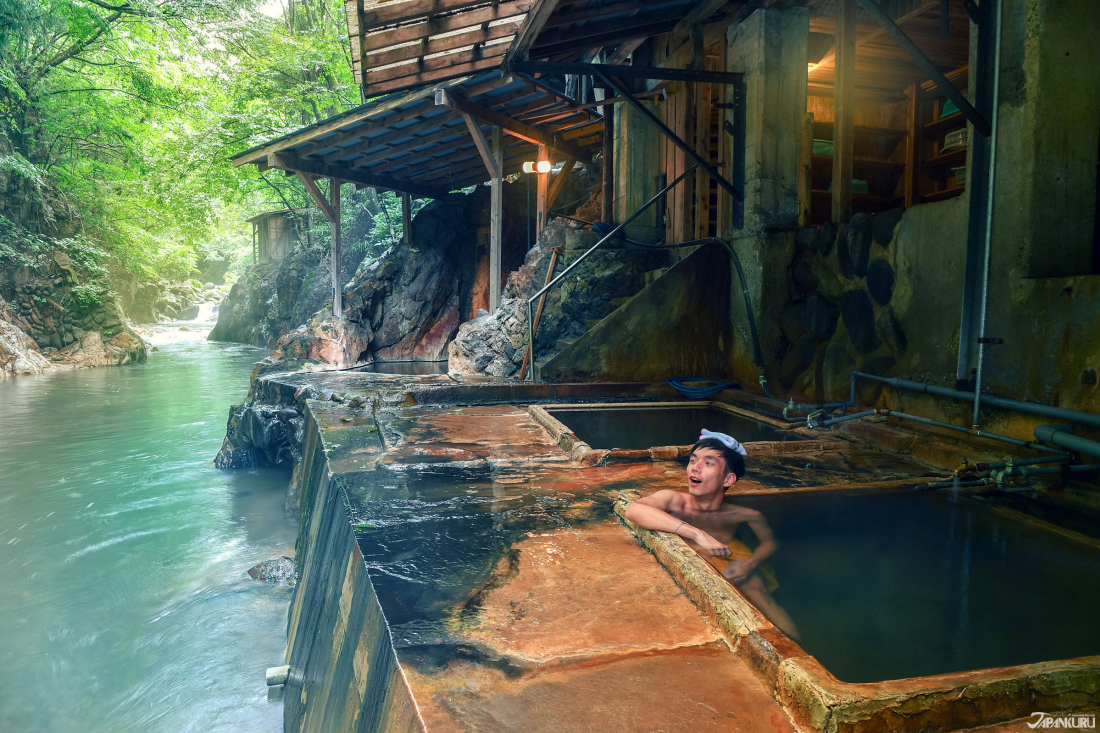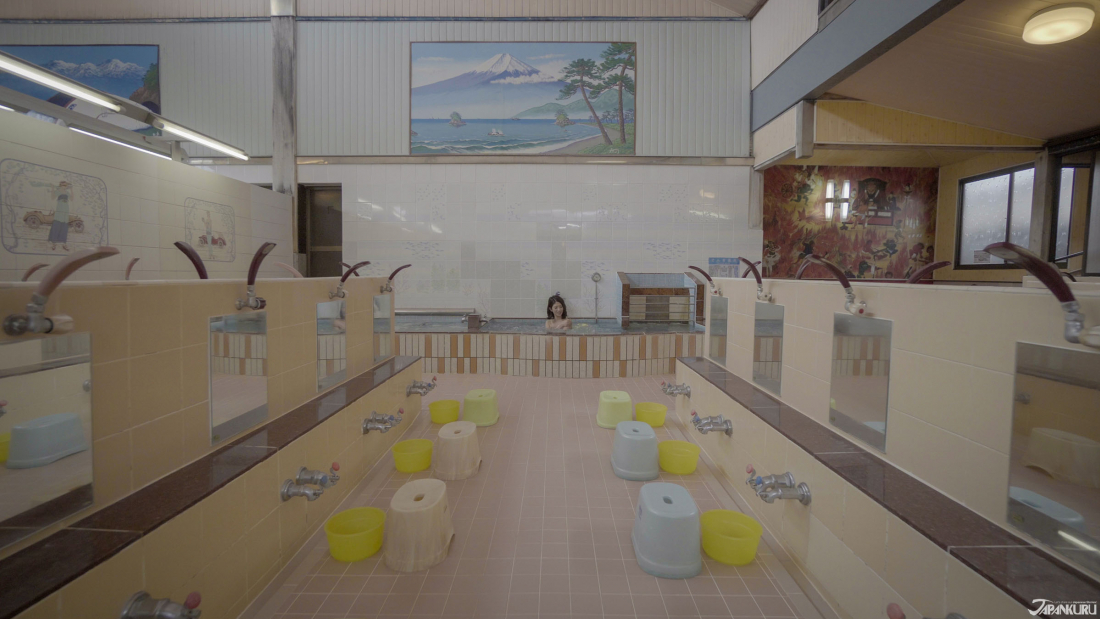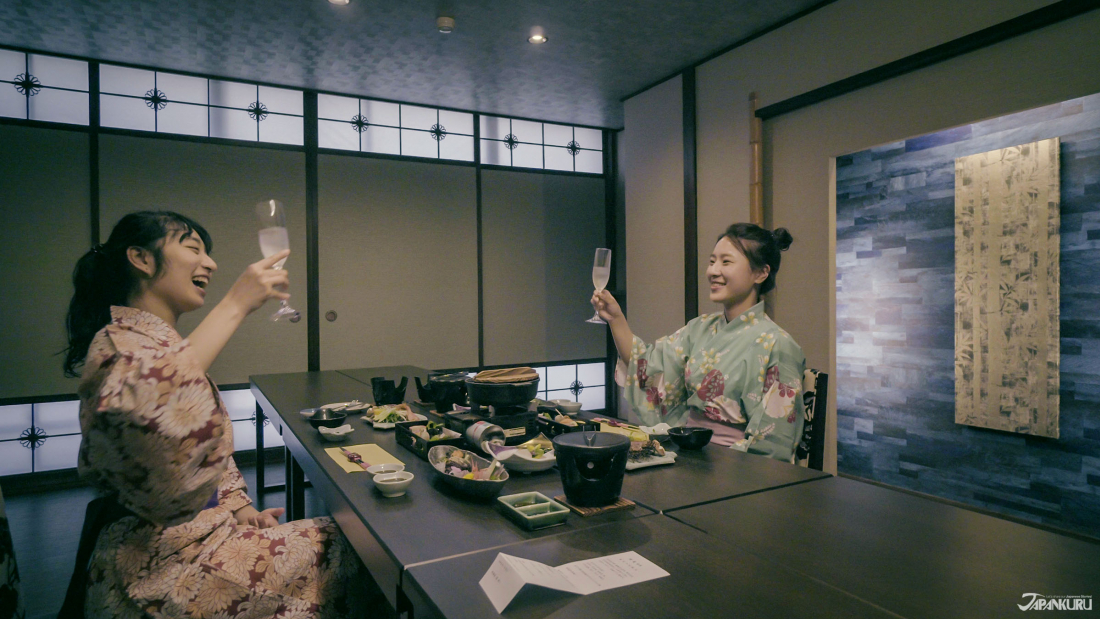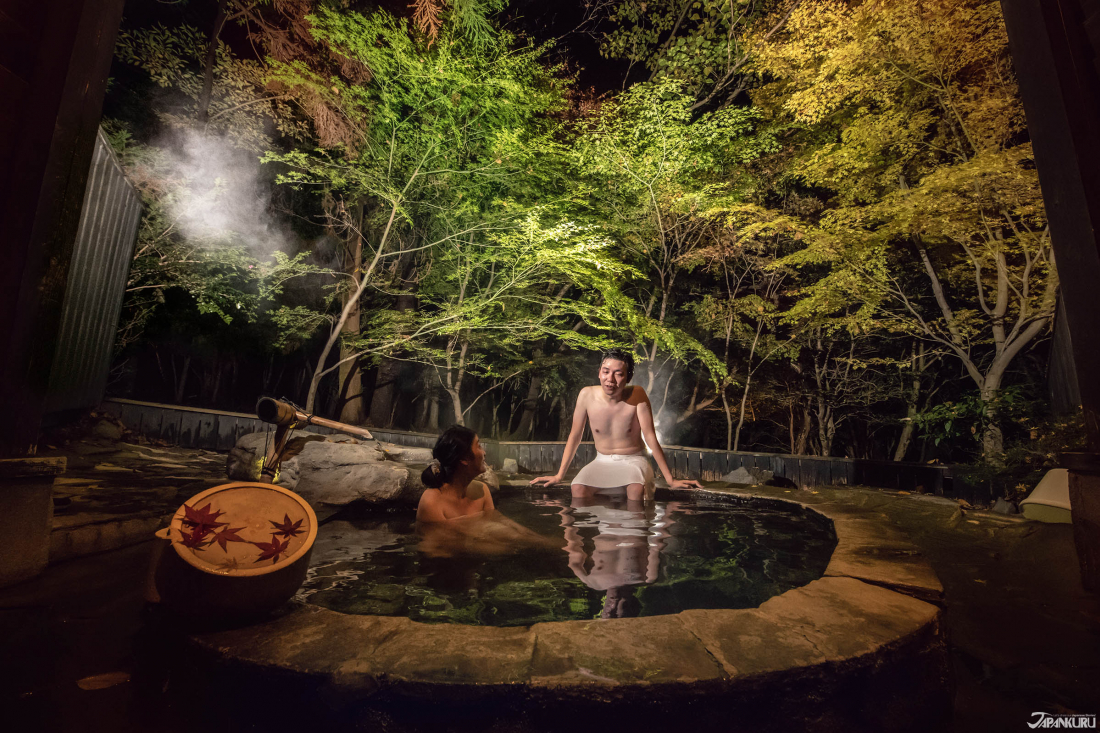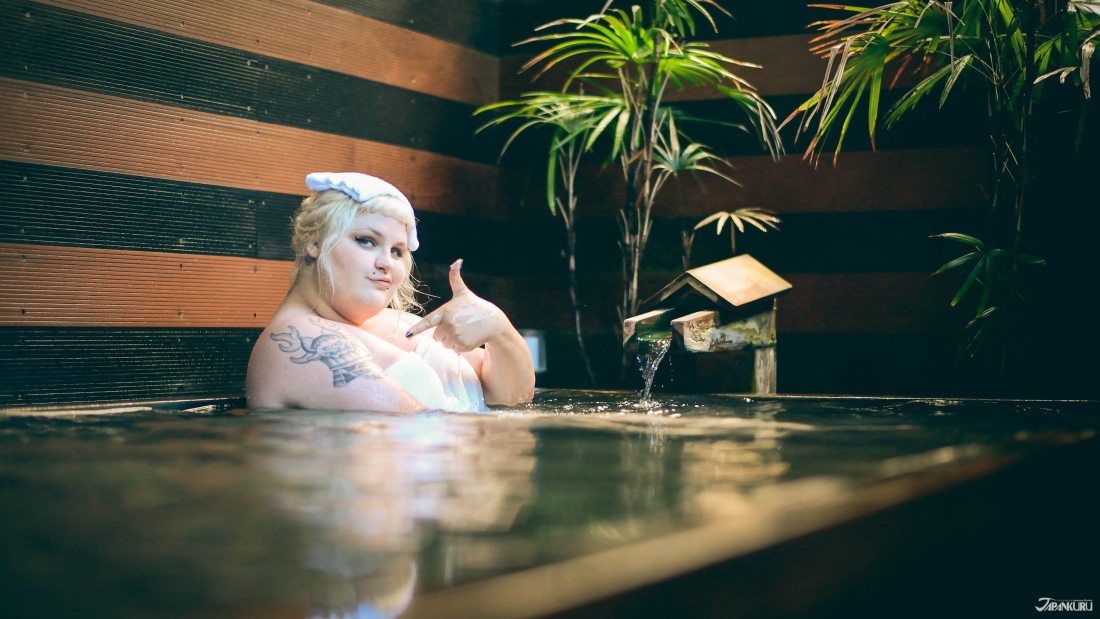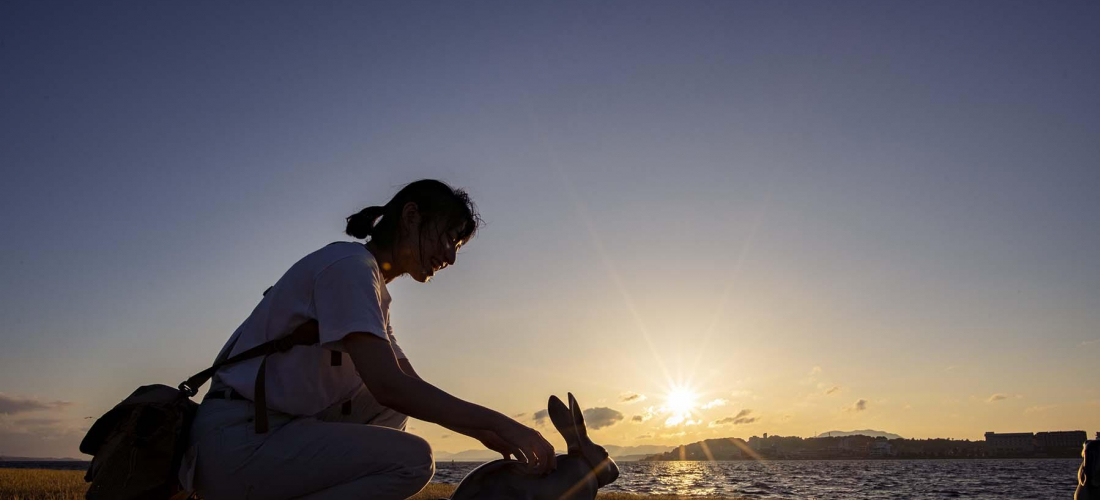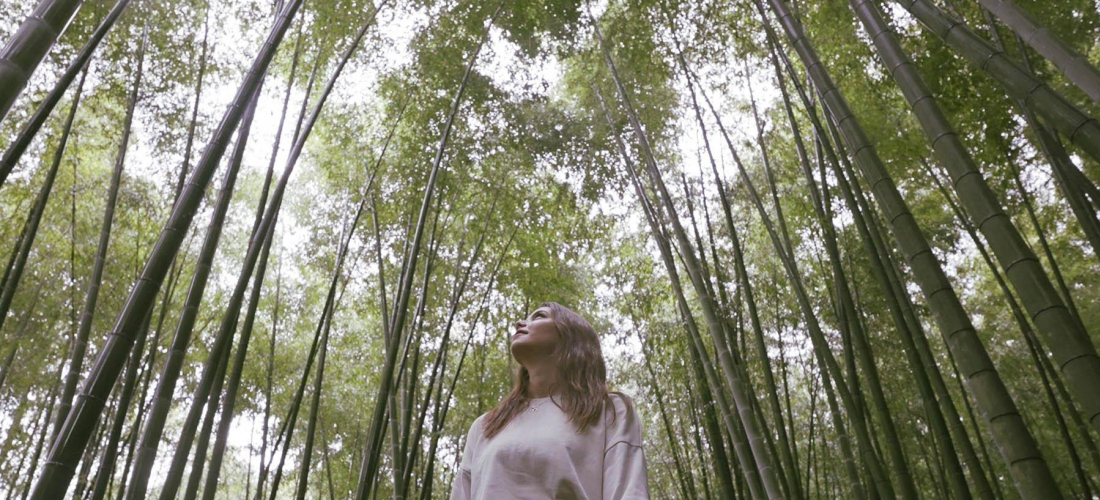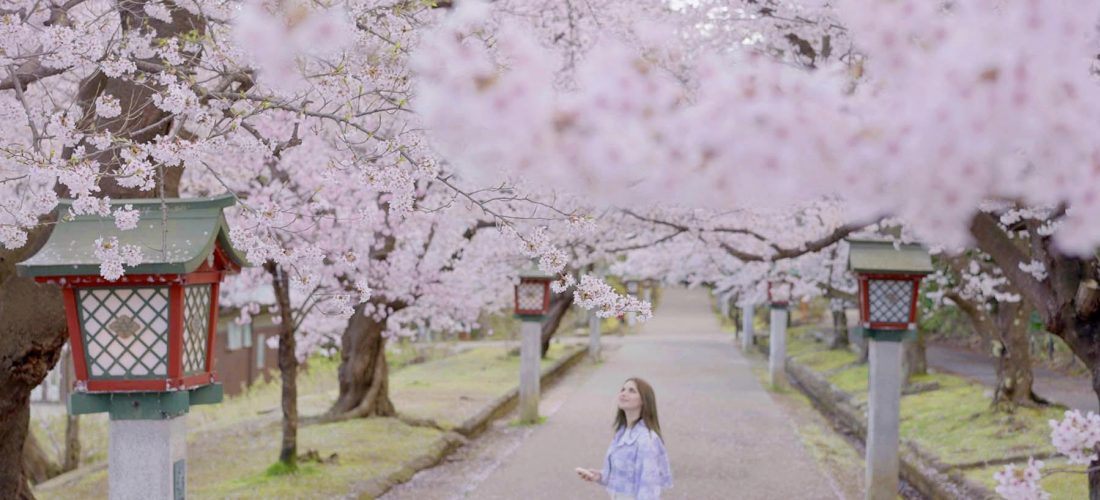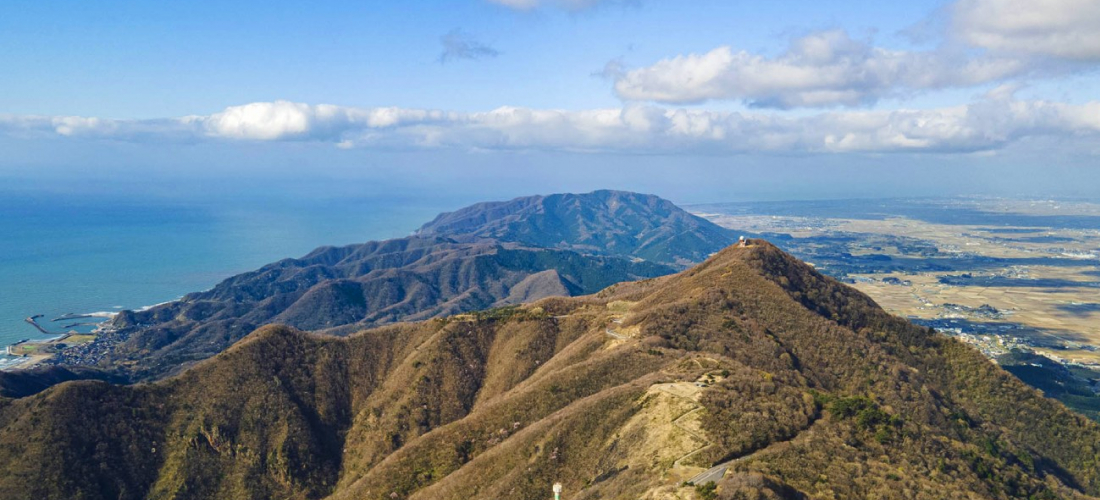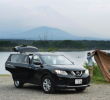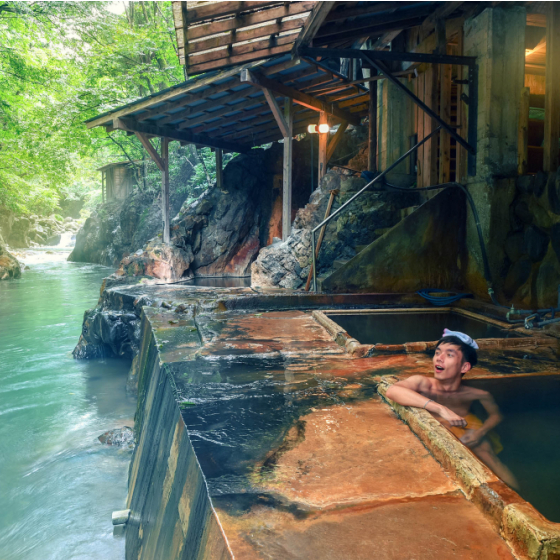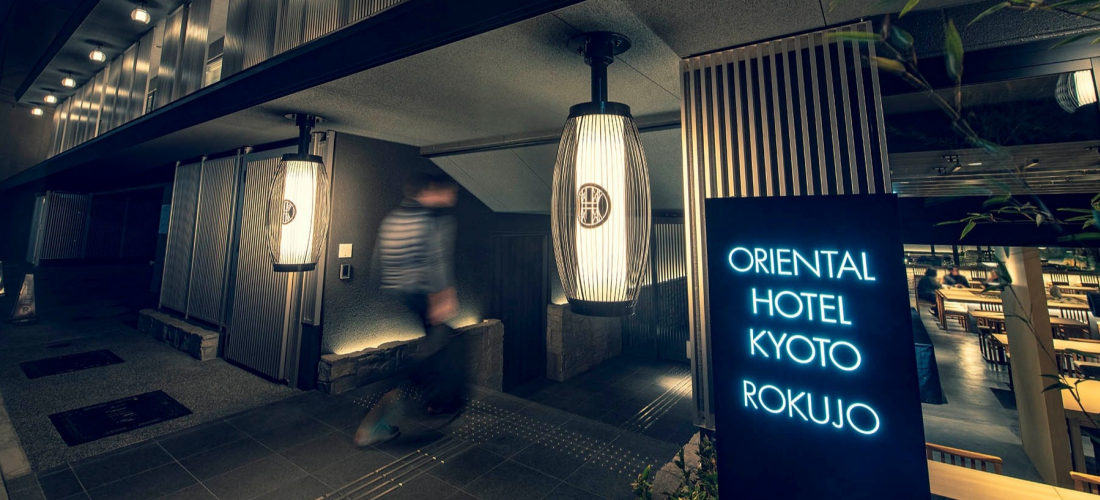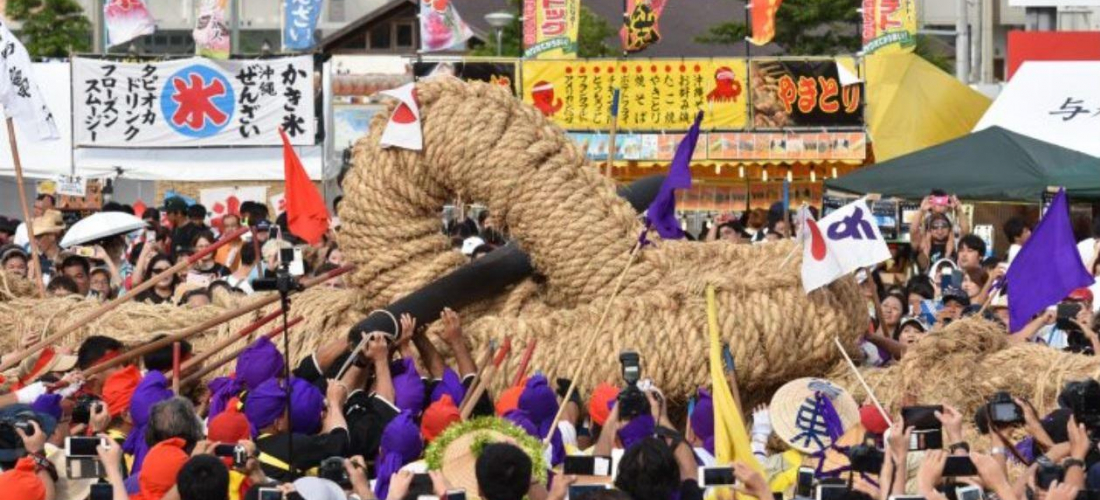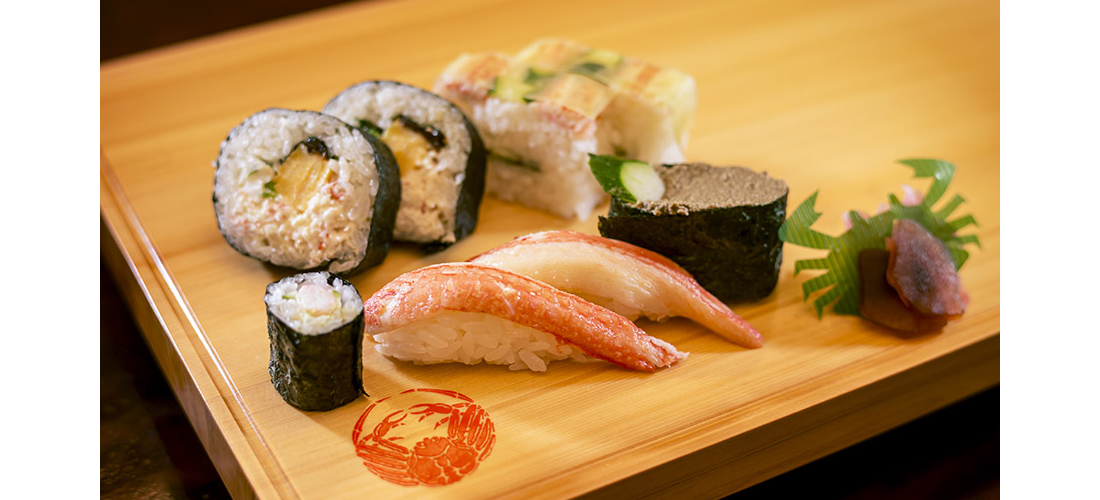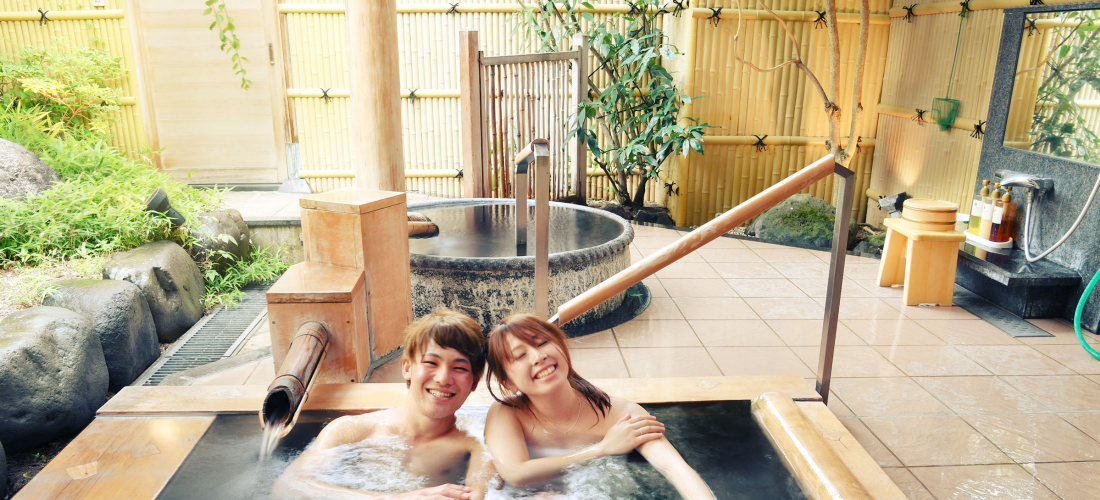
CONTENTS
Onsen, sento, rotenburo,savez-vous ce que signifient ces mots? Poursuivez votre lecture pour découvrir tout ce dont vous avez besoin pour profiter de la culture unique des sources chaudes du Japon.
La culture des sources chaudes et des spas au Japon
Les îles japonaises sont soumise à une forte activité sismique et géothermique, c'est pourquoi les îles ne sont pas seulement parsemées de volcans, mais aussi de nombreuses sources chaudes naturelles. Les Japonais utilisent des sources naturellement chaudes (appelées onsen, 温泉) pour se baigner et se détendre depuis des siècles et des siècles, et certains bains onsen populaires au Japon sont maintenant utilisés depuis plus d'un millénaire! La culture japonaise des sources chaudes a eu beaucoup de temps pour se développer et se développer, et il existe maintenant une variété énorme de façons de profiter d'un bain relaxant et chaud au pays du soleil levant.
Les Onsen standards
Le mot onsen fait référence aux sources chaudes naturelles du Japon, et c'est le terme le plus basique. La définition est simple, un onsen soit:
(1) s'écoule du sol à l'état naturel à une température supérieure à 25 ° C (77 ° F)
ou
(2) contient une certaine quantité de minéraux particuliers.
La Japan Spa Association Hot Spring of Japan a une définition plus détaillée des températures et des minéraux qui font officiellement d'une source thermale un «onsen» ici, séparant le véritable onsen des vieux bains ordinaires. Bien sûr, beaucoup de gens au Japon visitent les bains publics au Japon, qu'ils correspondent ou non à la définition stricte des onsen.
On pense généralement que les trois meilleurs onsen au Japon sont Arima Onsen à Hyogo, Kusatsu Onsen à Gunma et le Gero Onsen à Gifu, mais il existe des onsen populaires dans tout le pays. Vous auriez du mal à trouver une zone sans au moins un bain public! Et beaucoup de gens considèrent qu'une visite à un onsen fait partie intégrante d'une visite au Japon.
Prenez l’air! Les Rotenburo (露天風呂)
«Rotenburo» signifie simplement tout bain situé à l'extérieur à l'air libre, ce qui signifie qu'il peut désigner soit un onsen de source chaude naturelle, soit un bain normal. Prendre un bain à l'extérieur peut sembler un peu intimidant pour les non-initiés, mais les amateurs d'onsen tombent souvent amoureux de l'expérience du rotenburo. Ce dernier permet aux baigneurs de s'entourer de la nature et de vraiment ressentir les quatre saisons du Japon pendant qu'ils se détendent dans l'eau. Ils sont souvent ouverts tout au long de l'automne et de l'hiver, vous pouvez donc regarder les feuilles d'érable rouge dériver de la cime des arbres ou même sentir la neige fondre sur votre peau, pendant que vous restez au chaud dans le bain brûlant. Parlez d'une expérience unique!
Les Ryokan à travers le Japon proposent des rotenburo comme celui-ci dans la région d'Unazuki de Toyama, et les fans de rotenburo choisiront leurs destinations en fonction de la qualité de l'eau ou du paysage naturel. De nombreux classements japonais onsen placent Kinugawa Onsen dans les trois meilleurs du pays, avec Ito Onsen et Atami Onsen.
Bains publics: les Sento (銭湯)
Sento, ou bains publics, est souvent plus facile d'accès que les onsen, avec des emplacements dispersés dans les plus grandes villes et les plus petits villages du Japon. (Il suffit de regarder cette carte des sento de la zone de la gare de Kyoto!) C'est parce que, comme nous le savons tous maintenant, le terme onsen est strictement réglementé et est utilisé uniquement pour les sources chaudes naturelles, mais les bains sento ne peuvent utiliser que de l'eau normale. Même sans minéraux naturels ni réputation d'effets curatifs spéciaux, se baigner dans un immense bain public fait toujours partie de la culture japonaise, et les sento sont souvent occupés par les habitants appréciant un bain dans leur sento de quartier.
Sento peut être des bains publics assez basiques, mais si vous rencontrez un "Super Sento", vous trouverez probablement plus que ce que vous avez imaginé! Consultez les annonces sur SuperSento.com et vous trouverez un sento comme celui-ci à Chichibu, Saitama, où les bains partagent le bâtiment avec des magasins, des restaurants et des «salles de relaxation» pleines de fauteuils de massage.
Passez-y la nuit: les Ryokan (旅館)
Les ryokan sont des hôtels japonais traditionnels, allant des petites auberges aux plus grands établissements, et l'accent est généralement mis sur les chambres de style japonais avec des tatamis, des repas luxueux de plusieurs plats et des bains communs – généralement une source chaude naturelle. L'avantage d'aller dans un onsen ryokan est que vous pouvez vous détendre et profiter de votre propre chambre privée après avoir terminé votre bain, déguster des spécialités locales et vous endormir sans avoir à vous traîner à la maison.
Tout pour vous: les Kashikiri (貸切)
Vous n'êtes pas intéressé par un bain commun pour partager l'eau avec d'autres inconnus? Vous préférez un bain solitaire, ou peut-être un bain avec un être cher? Ne vous inquiétez pas, il y a une option pour vous aussi! Kashikiri signifie location privée, et de nombreuses installations onsen (en particulier les ryokan) proposent des onsen kashikiri qui peuvent être loués pour un usage privé. Certains hébergements ont même des bains kashikiri intégrés directement sur le balcon des chambres!
♨ Le savoir-vivre dans les Onsen ♨
Prêt à faire une bombe tout nu pour amuser la gallerie? Visiter un onsen peut être amusant, mais ce n'est pas vraiment l'endroit pour faire des folies… Les bains collectifs fonctionnent parce que chacun fait de son mieux pour profiter de l'expérience sans déranger les autres, ce qui est en effet très japonais. La plupart des «règles onsen» que vous verrez relèvent du bon sens, et elles sont principalement là pour vous garder, vous et les autres baigneurs, en sécurité et heureux, alors gardez un œil attentif et suivez les règles que vous voyez affichées! Pour quelques consignes de sécurité de base avant de partir, consultez celles de la Japan Spa Association Hot Spring of Japan.
Onsen autorisant les tatouages
Malheureusement, de nombreux bains publics au Japon ne permettent toujours pas aux personnes tatouées d'entrer dans l'eau ― ou, dans certains cas, d'entrer même dans les bâtiments! Pendant de nombreuses années, les tatouages au Japon ont été associés aux Yakuza, et donc, interdire les clients tatoués est toujours considéré comme une pratique de sécurité dans certains onsen et sento. Mais au fil des années, de plus en plus d'établissements autorisent les tatouages, et de nombreux endroits sont prêts à faire des exceptions pour les voyageurs étrangers avec de petits dessins. Si vous en avez, consultez notre liste de sources chaudes autorisant les tatouages pour savoir où aller!
Profitez du bain!
Les sources chaudes du Japon sont profondément liées à la culture locale et les voyageurs commencent tout juste à le comprendre. Mais le monde des onsen est vaste, avec beaucoup à offrir ― les vrais amateurs d'onsen peuvent acquérir les qualifications nécessaires pour devenir «instructeur onsen», «sommelier onsen» ou «coordinateur onsen». Il y a même des onsen qui attendent toujours d'être trouvés, nichés dans les berges et les dunes de sable ou dans les montagnes ― serez-vous celui qui les trouvera?
(Faites juste attention, cependant, ces sources chaudes dans la nature peuvent être brûlantes!)
Pour d'autres infos et news sur le Japon, suivez Japankuru sur twitter, instagram, et facebook!
Details
NAME:source chaude au Japon
MAP
PROFILE
Follow us @Japankuru on Facebook, Instagram, and Twitter!
COMMENT
FEATURED MEDIA
VIEW MORE
・Accommodations for Odaiba Sightseers: Mitsui Garden Hotel Toyosu PREMIER ・住宿推薦 三井花園飯店 豐洲普米爾 ・오다이바 관광 맞춤 숙소: 미츠이 가든 호텔 토요스 프리미어 ・ค้างคืนที่ Mitsui Garden Hotel Toyosu Premier โรงแรมสำหรับผู้มาเยือน Odaiba #japankuru #odaiba #tokyo #tokyotrip #japantrip #japantravel #mitsuigardenhotel #mitsuigardenhoteltoyosupremier #tokyohotel #odaibahotel #toyosu #tokyoview #tokyobay #rainbowbridge #미츠이가든호텔토요스프리미어 #오다이바 #오다이바맛집 #오다이바건담 #오다이바해변공원 #오다이바야경 #오다이바온천

Nagano Prefecture is famous for delicious soba noodles, and in the city of Ueda, you can learn from the experts! Local aunties run this cooking class, teaching you everything you need to know to make your own delicious plate of soba noodles entirely from scratch. #japankuru #soba #sobanoodles #japanesefood #travelexperience #japan #japantrip #ueda #nagano #japaneseculture #japanexperience #daytrip #daytour #cookingclass #japanesecookingclass #上田市 #そば作り #소바체험 #우에다시 #나가노여행 #일본소바

Kuramae Shrine is known for its early-blooming cherry blossoms and its gorgeous golden mimosa blooms, making it a great sakura spot for travelers arriving in Tokyo a little early for the main cherry blossom season. It’s also tucked away in a neighborhood packed with trendy cafes and coffee shops. Kuramae is a lovely place to spend the day. 🌸☕️ ・ #japankuru #kuramaeshrine #kuramae #tokyo #tokyotrip #cherryblossom #cherryblossoms #mimosa #tokyocherry #花見 #蔵前神社 #ミモザ #桜 #東京 #Japan #日本 #일본 #Japon #ญี่ปุ่น #Japão #Japón #япония #japantravel #日本旅行 #日本旅遊 #일본여행 #japan_of_insta #japantrip #traveljapan

Local Japanese Favorites at the Okinawa Don Quijote ② Ohta’s Isan, the digestive aid of the Japanese people ・ ・ 2024唐吉訶德不可不知的好物推薦② 日本國民消化小幫手:太田胃散 ・ ・ 오키나와 돈키호테 숨은 꿀템2. 일본 국민 소화제! 오타이산 #japankuru #okinawa #donki #沖縄 #오키나와 #오키나와여행 #오키나와돈키호테 #일본쇼핑리스트 #오타이산 #일본소화제 #太田胃酸 #ohtasisan

Happy Valentine's Day from the Japankuru team! May your day be full of sweet chocolates and sweet nothings. 💕 Or, if you're like a rising number of women in Japan, take the opportunity to treat yourself! 🍫💝💆 • Find out more at Japankuru.com! (Link in bio.) • #japankuru #valentinesday #valentineschocolate #japanesechocolate #japaneseculture #バレンタイン #バレンタインチョコ #メリーチョコレート #Japan #日本 #일본 #Japon #ญี่ปุ่น #Japão #япония #japantravel #日本旅行 #日本旅遊 #일본여행 #japan_of_insta #japantrip #traveljapan #japan🇯🇵 #japanlife #igerstokyo #explorejapan #japanfocus #enjoyjapan #japantravelphoto

Japankuru Coupon: BEAMS fashion, accessories, lifestyle goods, and more! BEAMS 5% Discount Coupon ▶︎ Validity Dates: February 1 ~ February 29, 2024 ▶︎ Discount: 5% off all products in-store ▶︎ Usable At: BEAMS stores throughout Japan (all stores except BEAMS JAPAN Izumo and BEAMS JAPAN Nikko) ▶︎ Details: Please present this coupon page before payment to receive your discount! This coupon is also valid in combination with tax-free discounts/refunds for foreign tourists. (Tax-free shopping is only available at some BEAMS locations.) Some products may not be eligible for discount. ・ ・ ・ BEAMS - JAPANKURU優惠折扣券 BEAMS 2024年2月限定特別優惠券 店內全部商品95折 ▶︎使用期間:2024/2/1到2024/2/29 ▶︎使用範圍:日本全國店舖 ▶︎使用方法:結帳時請務必事先向店員出示本優惠券,若未出示本優惠券恕無法享有本優惠。本優惠券可搭配免稅優惠一併使用,但不排除特定門市無法使用本優惠券。此外,不排除特定商品不適用本優惠券。 ・ ・ ・ 「빔즈(BEAMS) x 재팬쿠루(JAPANKURU)」스페셜 할인 쿠폰 빔즈(BEAMS) 5% 할인 쿠폰 ▶유효기간: 2024년 2월 1일 ~ 2월 29일(한 달 동안) ▶︎할인율: 매장 내 전 상품 “5% 할인" ▶︎해당 매장: 일본 전국 빔즈 (BEAMS) 매장 (BEAMS JAPAN이즈모、BEAMS JAPAN닛코는 쿠폰 할인 대상 제외 점포입니다) ▶︎상세 내용: 결제 전 본 쿠폰 페이지를 제시하면 정가대비 5% 할인된 금액에 구매하실 수 있습니다! 본 쿠폰은 외국인 관광객들을 대상으로 하고 있으므로 면세 혜택(빔즈 일부 매장)과 별도로 추가 할인이 가능합니다. (일부 매장 및 제품은 대상에서 제외될 수 있습니다.) #japankuru #beams #beamsjapan #beamsginza #coupon #재팬쿠루 #빔즈재팬 #빔즈 #일본여행 #일본쇼핑 #일본쇼핑리스트 #銀座 #東京 #tokyoshopping #japankurucoupon


